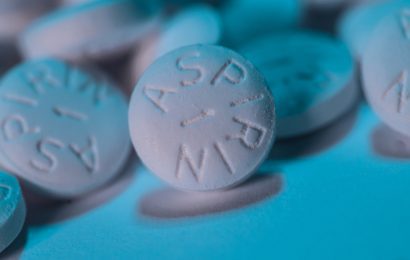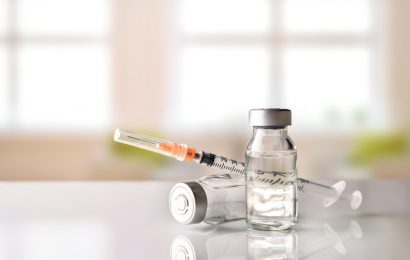Q. I recently switched from using syringes to inject insulin to using an insulin pen, and it seems like I need to inject more insulin with the pen to counter the same blood glucose level. The length of the needle seems to be the same, the pen is primed, and yet the pen injection has less of a blood-glucose-lowering effect. What could be going on here?
A. The insulin contained in vials and pens is identical. So if you’re using your pen correctly, there should be no change in the effectiveness of the insulin on your blood glucose levels. It’s not unusual for people to be educated on how to use an insulin pen and to believe they are injecting with proper technique but to make one or more minor mistakes that affect the amount of insulin being injected. I recommend that you make an appointment with your diabetes educator or health-care provider and have that person observe you injecting a dose of insulin to see what, if anything, might be going wrong.
Here are a few examples of common errors that can occur when administering insulin with a pen:
A person may dial in the correct dose, put the needle into the skin correctly, but instead of pushing the button at the end of the pen to inject the insulin, dial the dose back to zero. This would result in no insulin being injected. Once the dose is dialed, the button has to be pushed in all the way — you should hear a series of clicks as you push — and then the pen must be held against the skin, needle inserted, for 6–10 seconds.
Some people know that they need to push the button to deliver the insulin, but they don’t push it hard enough to inject the entire dose.
Another common mistake is to fail to leave the needle in place for at least 6 seconds after pushing the button on the pen. If the needle is removed too soon, the full dose of insulin is not administered, and the desired amount of blood-glucose-lowering does not occur. When this happens, you may see or feel a wet area on the skin. The wet substance is insulin that is ending up outside the body instead of under the skin where it should be.
Some types of insulin need to be gently agitated before injecting. Insulins that are clear in appearance do not require this step. But if you are using NPH insulin or a mixed insulin (a mixture of short-acting and intermediate-acting insulin), the pen or vial needs to be gently rolled back and forth in your hands and inverted up and down a few times to distribute the insulin evenly. Insulin should never be vigorously shaken. It should look cloudy throughout with no floating particles or clumps. If you see particles or something that looks white and powdery, then it is not mixed well, and the dose injected will be inaccurate.
Priming the pen when you put the needle on is the correct thing to do. However, it is very important not to leave the pen needle on the pen when you are finished. It needs to be removed and discarded. Leaving a pen needle on an insulin pen allows air to enter the pen. Injecting air mixed with insulin won’t physically hurt you, but you will inject less insulin than you think. So remove your pen needle from your insulin pen after each injection. When you put a new needle on to prime the pen, hold the pen upright in the air (with the uncapped needle pointing up), and tap the side of the insulin pen to remove any air pockets that may be in the insulin cartridge.
It is important to rotate — or change — your injection site each time you inject. When you repeatedly inject into the same site, a lump of fatty tissue (called lipohypertrophy) may develop. When you inject into a fatty lump, the insulin is not absorbed normally, so you may not receive the full dose.
You mention needle length. Data have shown that there is no reason to use a needle longer than 4–6 millimeters (mm). When you use a short needle, there is no need for you to pinch your skin up before injecting. You simply inject straight into your skin. However, if you are using an 8-mm pen needle or a 12.7-mm needle (the longest needle available), you need to pinch up some skin at the injection site before inserting the needle. This step lowers the risk of giving yourself an intramuscular (into the muscle) injection instead of subcutaneous (just under the skin) injection. Injecting into a muscle causes the insulin to work much faster.
Today’s needles are so thin (and therefore painless) that if you aren’t injecting straight in, you could potentially bend the needle. If the needle is bent, you may not get all of the insulin that is being injected.
Another error that can occur is not removing the inner cap of the insulin pen needle. The pen needle comes with two caps: a larger, outer cap that should be saved for removing the needle from the pen after use, and an inner cap that protects the needle. When you inject you must remove both caps. If only the outer cap is removed, no insulin will be delivered. When recapping a needle for removal from the pen, never recap with the small, inner cap; only use the larger, outer cap to avoid sticking yourself.
Lastly, the expiration date of the insulin needs to be considered. When kept refrigerated, unused insulin pens are good until the expiration date printed on the pen itself. This may be several years from the date of purchase. However, once you start using a pen, it will expire in 14–42 days, depending on the specific pen you are using. This should be noted in the printed material that comes with your pens, but if you can’t find this information, check with your pharmacist to find out how long your pen is stable once it has been used. Refrigerating a pen that has been used is not recommended and will not extend its shelf life. Insulin that has expired may be less effective (or completely ineffective) and may not lower your blood glucose as desired.
Want to learn more about injecting insulin? Read “Everything You Ever Wanted to Know About Insulin Injections” and “Ready, Aim, Inject: All About Needles and Syringes.”





